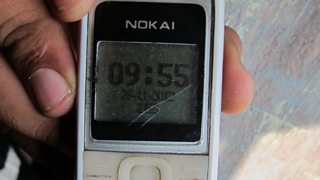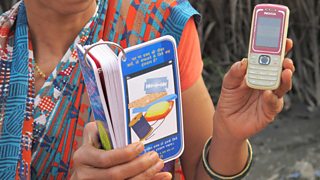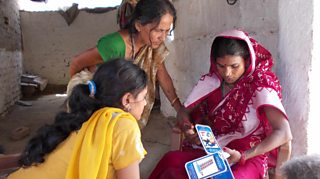Sleek smartphones. Wafer-thin tablets. Ingenious apps. We all love the latest technology. But let me tell you about a device that is truly revolutionary. A device that can save lives. A device that is right now helping millions of people live healthier lives.����

That's right. A very basic and battered fake 'nokai' mobile phone, held together with an elastic band and bearing no numbers.�� This phone is typical of those used today by people in Bihar, one of the poorest states in India where maternal and child mortality rates are some of the highest in the world.
Over 80% of women in Bihar have access to a mobile phone like this. In contrast, only 18% of women in the state watch TV and 11%listen to the radio.�� And what’s more, our shows that all community health workers in the state either own, or have access to, a mobile phone.��
Recognising this, �������� Media Action is harnessing the most basic mobile phone technology in Bihar to deliver a high-impact solution.
'Key' components��
First, we undertook research to understand how people in Bihar used their phones. We found out, for example, that most people in rural Bihar were unable to send or open text messages ��or locate their address book on their phone. So while they have phones, people in Bihar use them for making and receiving phone calls – nothing else.
So we created a simple, audio-based solution designed for health workers to use during their visits to families. Called (meaning 'key'), it has two components. The first is a deck of 40 cards with health messages for each stage of pregnancy and post-natal care. On the front of the card is a picture and health lesson, and on the back of the card – the side the community health worker sees – key learning points to be shared.��

But what's unique is the second component: at the bottom of each card is a seven-digit number, a mobile short code. When the community health worker dials this number, she goes straight to the relevant audio message which she can play to the family she's visiting. No complicated list of options, no handset-dependent apps and no new technology skills are necessary. She just has to make a phone call.
The audio messages, voiced by an empathetic, reassuring character called Dr Anita, advises the family on topics such as the importance of preparing for the birth. And Dr Anita will be there right the way through a woman’s pregnancy and after the birth, offering advice at regular intervals.
Going to scale immediately
Because �������� Media Action negotiated some of the lowest call charges in the world with all six of the major network operators in Bihar, all health workers can access the services via the same, common short codes, whatever type or brand of handset or network they are on.��

And because we selected a technology and related skills that health workers already have, we could go to scale immediately. We are currently on course to the project's aim of 200,000 community health workers who will in turn reach nearly 7m pregnant women and women with children under the age of two.
Using mobile phones allows us and the government to collect real-time data on which cards are being used by which health worker, when and where. This provides valuable feedback on whether beneficiaries are receiving the advise they need. We are not aware of any other tracking system in the world that does this at scale, especially with simple mobile handsets.
In the project's first seven months, we've already seen 75,000 unique users calling the service and more than 1.4 million minutes of Dr Anita have been played.
We’ve also heard that in some areas, there’s been a spike in women going to their local health facility. that their health worker, along with Dr Anita, convinced them to register for free government health services.
�������� Media Action will be tracking the project's impact on health behaviours over the next four years. In the meantime, we're exploring with the government of India how to take this service to the rest of the country.
In addition to Mobile Kunji, we are also offering .
Right here, right now
We should be excited by the potential for technical innovation to improve the lives of many, especially the lives of some of the very poorest in the world. New and better technology will transform health systems, by digitalising health records, by diagnosing conditions straight from the phone and remotely managing medical supplies.
But there is also beauty in simplicity and in the here and now. If we use what people have in their hands, we can start saving lives now.
Related links
From the �������� Media Action blog:
From �������� Media Action:
